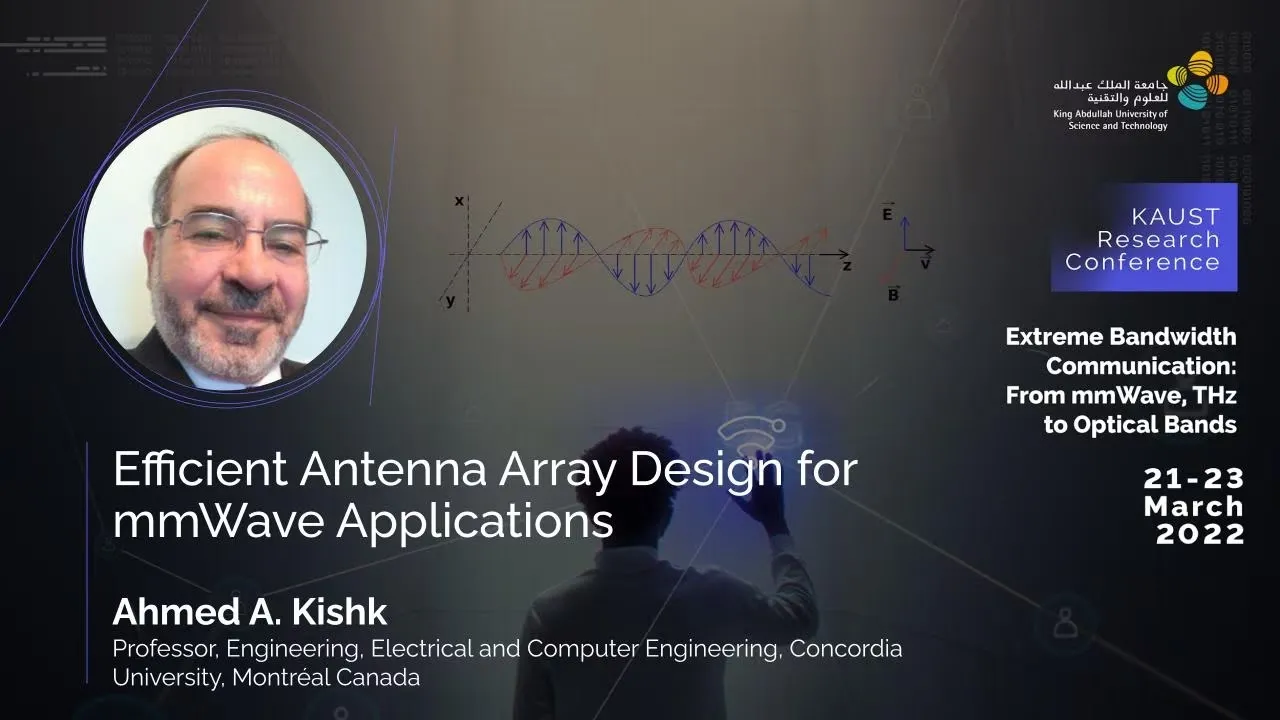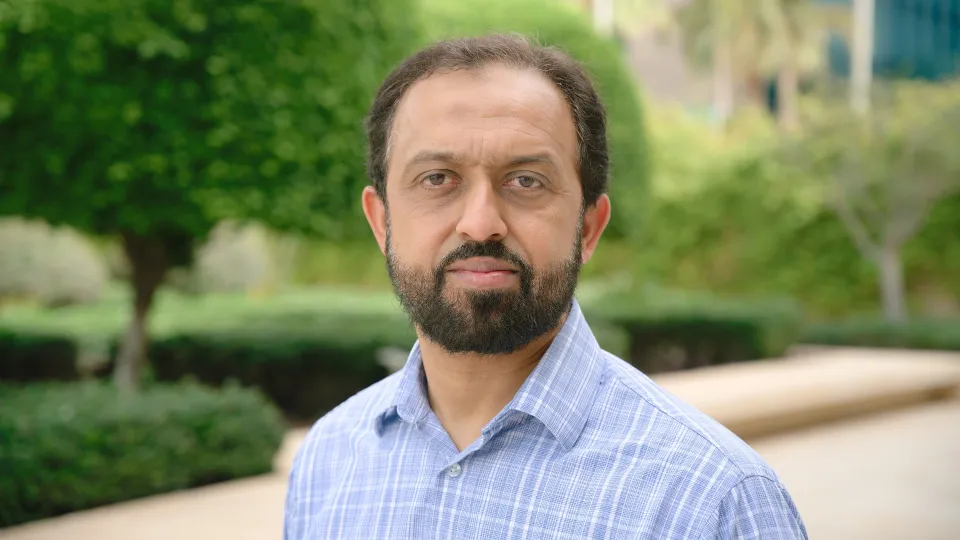
Prof. Ahmed A. Kishk: Efficient Antenna Array Design for mmWave Applications
- Prof. Ahmed Kishk, Electrical and Computer Engineering, Concordia University, Montréal Canada
KAUST Library
Overview
Abstract
Recently, interest has increased for millimeter wave antennas due to the high demand for faster data and reliable service in mobile communication. One of the driving forces is the fifth generation (5G) of the wireless network, which aims to provide such requirements. To handle such a demand, the systems should utilize the millimeter-wave bands. As the frequency increases, the path loss and material losses increase reducing the system efficiency. Therefore, there is a need for efficient millimeter-wave guiding structures that overcome such limitations. Gap waveguide technology is found to overcome such limitations at millimeter-wave bands. The advantages of this structure are in its suitability for millimeter wave applications as it is self-packaged with no radiation losses. Such a guiding structure has around 1:2 bandwidth that can also be enhanced under some conditions.
In this talk, several highly efficient antenna arrays will be presented based on the use of the gap waveguide technology. In addition, examples of added functions to the arrays will be presented such ass Diplexers separating transmit and receive bands and monopulse array with compact comparable based on the gap waveguide technology, and leaky wave antenna array for frequency scanning properties.
Brief Biography
Ahmed A. Kishk received a BSc degree in Electronics and Communication Engineering from Cairo University, Cairo, Egypt, in 1977, and BSc. in Applied Mathematics from Ain-Shams University, Cairo, Egypt 1980. In 1981, he joined the Department of Electrical Engineering, University of Manitoba, Winnipeg, Canada, where he obtained his M. Eng. and Ph.D. degrees in 1983 and 1986. From 1977 to 1981, he was a research assistant and an instructor at the Faculty of Engineering, Cairo University. From 1981 to 1985, he was a research assistant at the Department of Electrical Engineering, University of Manitoba. From December 1985 to August 1986, he was a research associate fellow in the same department. In 1986, he joined the Department of Electrical Engineering, University of Mississippi, as an Assistant Professor. He was on sabbatical leave at the Chalmers University of Technology, Sweden, during the 1994-1995 and 2009-2010 academic years. He was a Professor at the University of Mississippi (1995-2011). He was the Center for Applied Electromagnetic System Research (CAESR) director during 2010-2011. Currently, he is a Professor at Concordia University, Montréal, Québec, Canada (since 2011) as Tier 1 Canada Research Chair in Advanced Antenna Systems. He was an Associate Editor of Antennas & Propagation Society Newsletters from 1990 to 1993. He is a distinguished lecturer for the Antennas and Propagation Society (2013-2015). He was an Editor of Antennas & Propagation Magazine (1993-2014). He was a Co-editor of the special issue, “Advances in the Application of the Method of Moments to Electromagnetic Scattering Problems,” in the ACES Journal. He was also an editor of the ACES Journal during 1997. He was an Editor-in-Chief of the ACES Journal from 1998 to 2001. He was the chair of the Physics and Engineering Division of the Mississippi Academy of Science (2001-2002). He was a Guest Editor of the special issue on artificial magnetic conductors, soft/hard surfaces, and other complex surfaces, in the IEEE Transactions on Antennas and Propagation, January 2005. He was a co-guest Editor in IEEE Antennas and Propagation and Wireless Letter on the special cluster on “5G/6G enabling antenna systems and associated testing technologies.” He was a technical program committee member for several international conferences. He was a member of the AP-S AdCom (2013-2015). He was the 2017 AP-S president.
Prof. Kishk research interest includes the areas of millimeter-wave antennas for 5G/6G applications, Analog beamforming network, Dielectric resonator antennas, microstrip antennas, small antennas, microwave sensors, RFID antennas for readers and tags, Multi-function antennas, microwave circuits, EBG, artificial magnetic conductors, soft and hard surfaces, phased array antennas, reflect/transmitarray, wearable antennas, and Feeds for Parabolic reflectors. He has published over 385-refereed journal articles and 510 conference papers. He is a co-author of four books and several book chapters and the editor of four books. He offered several short courses in international conferences.
